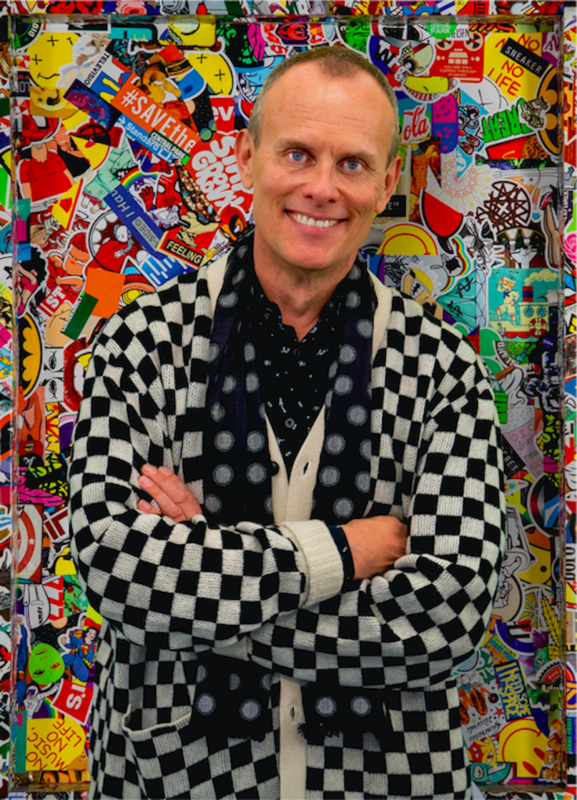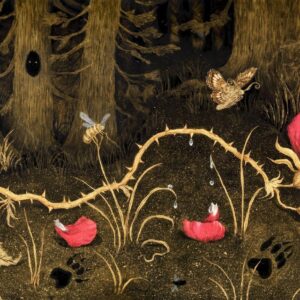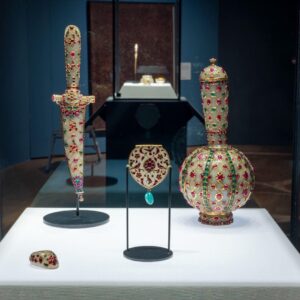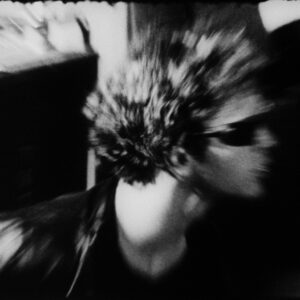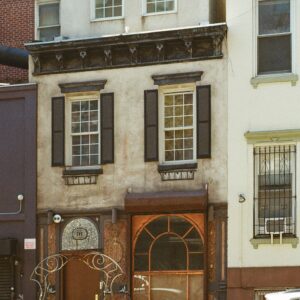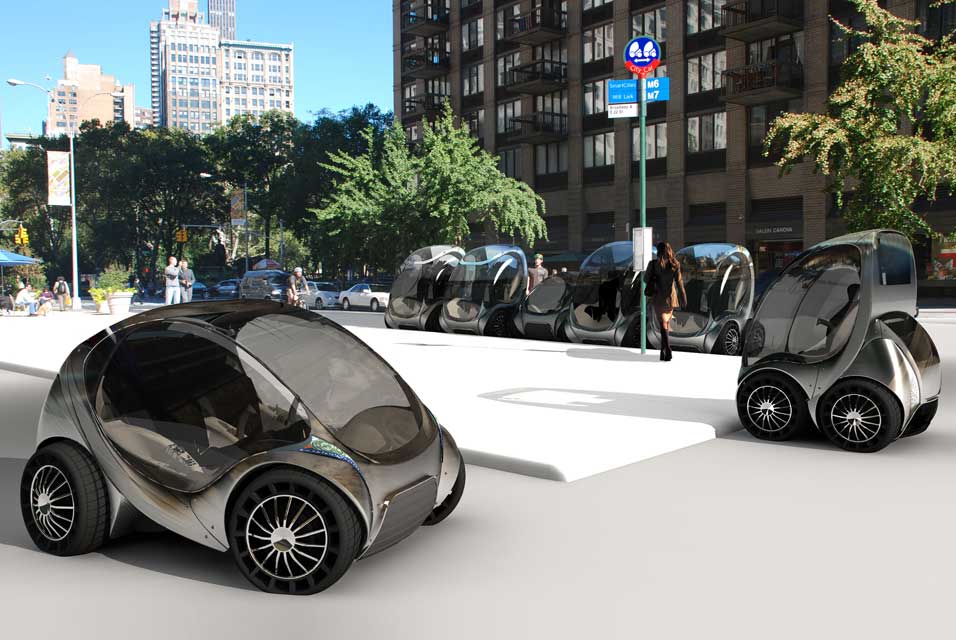
Cooper-Hewitt, National Design Museum presents the fourth exhibition in the National Design Triennial series. “Why Design Now?” will be on view from through to Jan. 9th, 2011, and will explore the work of designers addressing human and environmental problems across many fields of design from architecture and product design to fashion, graphics, new media and landscape design. Organized by Cooper-Hewitt curators Ellen Lupton, Cara McCarty, Matilda McQuaid and Cynthia Smith, the Triennial will be global in reach for the first time, reflecting the connectedness of design practices and the need for international cooperation to solve the world’s problems.
The exhibition title asks the question “Why Design Now?” to examine why design thinking is an essential tool for solving some of today’s most urgent problems; what draws creative thinkers, makers and problem solvers to this crucial field of discovery; and why business leaders, policy makers, consumers and citizens should embrace design values. Key developments across design disciplines will be presented through eight themes: energy, mobility, community, materials, prosperity, health, communication and simplicity.
Inaugurated in 2000, the Triennial series seeks out and presents the most innovative, forward-thinking designs at the center of contemporary culture from the previous three years. The exhibition showcases design solutions that promote environmental stewardship, social equity, accessibility and creative capital in 134 projects from 44 countries.
“This groundbreaking exhibition gives voice to a revolution taking place within all areas of design practice, from how materials and products are planned and conceived to how goods and services are manufactured, distributed and reclaimed worldwide,” said McCarty, curatorial director of the museum. “‘Why Design Now?’ takes a positive look at the intriguing and ambitious projects shaping this revolution.”
The curatorial team chose the designers and firms by group consensus and also collected nominations from the public through a dedicated Web site, which brought in nominations for projects such as Trove wallpapers and Etsy.
“Why Design Now?” will be accompanied by interpretive tools that extend the exhibition beyond the museum galleries. Developed in collaboration with the museum’s curators and educators, iPod touch digital guides will supplement the visitor experience with designer interviews and video footage, and will be available for use free of charge.
Energy
Around the world, scientists, engineers and designers are seeking ways to harness energy from the sun, wind and ocean tides and create new products and structures that use energy efficiently and self-sufficiently. Among the projects on view in this section are the Z-20 concentrated solar-panel system, which intensifies the solar energy harnessed through the use of mirrors and tracking devices; the bioWave, an enormous underwater machine that mimics the swaying motion of seaweed and is designed to capture the kinetic energy of ocean turbulence; the Power Aware cord, which provides a real-time way for consumers to visualize their energy consumption; and the experimental desert city Masdar in the United Arab Emirates, which will be the largest and most advanced carbon-neutral community.
Mobility
Allowing people to travel across town or over a continent while conserving resources requires fresh design solutions and an examination of mobility patterns and components. The exhibition will feature works such as Coulomb Technologies’ ChargePoint—a broad network of vehicle charging stations connected to the energy grid and installed in public and private lots; ondemand electric vehicles like MIT’s CityCar; urban transportation forms such as foldable bicycles and DIY bicycle trailers; and France’s recently designed AGV high-speed self-propelled train.
Community
In response to ever-expanding sprawl in the developed world and escalating urban density in developing areas, architects are creating rooftop villages, urban farms and mixed-use housing developments that employ local materials and encourage harmonious, energy-efficient living at close quarters. Highlights of the design projects on view include the H20tel in the Netherlands, the first hydrogen-powered hotel; Oslo’s new, environmentally friendly opera house, which provides city residents access to the waterfront for the first time; vertical farming initiatives such as the Eco-Laboratory; and the Mapungubwe National Park Interpretive Center, built using local materials and labor.
Materials
Great efforts have been made in the past decade to address the need for more sustainable materials, which reduce the amount of energy and fossil fuels used in manufacturing. Chemists, engineers and designers are inventing everything from biodegradable, petroleum-free plastics to foam insulation that grows in the dark like a mushroom, requiring minimal energy to produce. Products are also being made with post-industrial and post-consumer recycled content, ranging from IceStone’s colorful and durable pre-cast concrete slabs that contain 100 percent recycled glass to items by fashion designer Martin Margiela who repurposes used objects into couture clothing. New information systems, including Ecolect’s Product Nutrition Label, are also helping consumers find goods with a clean biological record, such as materials made from reclaimed waste, from non-toxic substances or from rapidly renewable agricultural products.
Prosperity
Progressive designers and entrepreneurs are building engines of prosperity that enable local communities to use their own resources to create their own wealth, as well as to participate in the global economy. Projects on view include a number of items that address basic necessities, such as a pearl millet thresher and a low-smoke stove developed for use in India; examples of slow design such as hand-made, limited-edition clothing by Alabama Chanin; and works made in collaboration with international designers and local craftspeople like the Witches’ Kitchen Collection, Design with a Conscience Series, manufactured by Artecnica.
Health
From creating prosthetic limbs controlled by the human mind to devising new ways to deliver health care to remote rural populations, designers are improving physical, mental and social wellness for everyone. Among the featured projects in this section are the Solvatten Safe Water System, which uses UV light to make water potable; affordable corrective eyewear that is self-adjusted by injecting various amounts of fluid into the lenses of thick glasses; a low-cost neonatal incubator made from car parts; a condom applicator; and the Z?n Hearing Aid, which is nearly invisible when placed behind the ear.
Communication
Smart phones, digital reading devices and social networks are changing the way people use and produce information. Designers are helping people understand the world’s problems by visualizing complex data and by delivering urgent messages about safety, equality and the environment. Works on view include industrial designer David Chavez’s prototype for a Braille wristwatch; One Laptop per Child’s XOXO laptop, designed by Yves Béhar, which is targeted specifically for the developed world and can be held flat, angled or like a book; Amazon’s Kindle, which offers a new way to experience books; Etsy, a global online marketplace for craftspeople, artists and designers; and the Etón FR 600 radio, an emergency radio charged via hand crank or solar panel, which works when or where the grid fails to function.
Simplicity
As designers strive to simplify production processes and consume fewer materials in smaller amounts, the quest for simplicity is shaping design’s economic and ethical values. On view will be Shigeru Ban’s 10-Unit system, which employs a single L-shaped component that can be used to construct a table, chair and bench; Karin Eriksson’s Gripp glasses, which help people comfortably grasp the vessels and hold them steady; the Return to Sender artisan, eco-casket; affordable products by MUJI; and the adjustable height AlphaBetter student desk, which allows students to sit or stand while working.
www.cooperhewitt.org/
